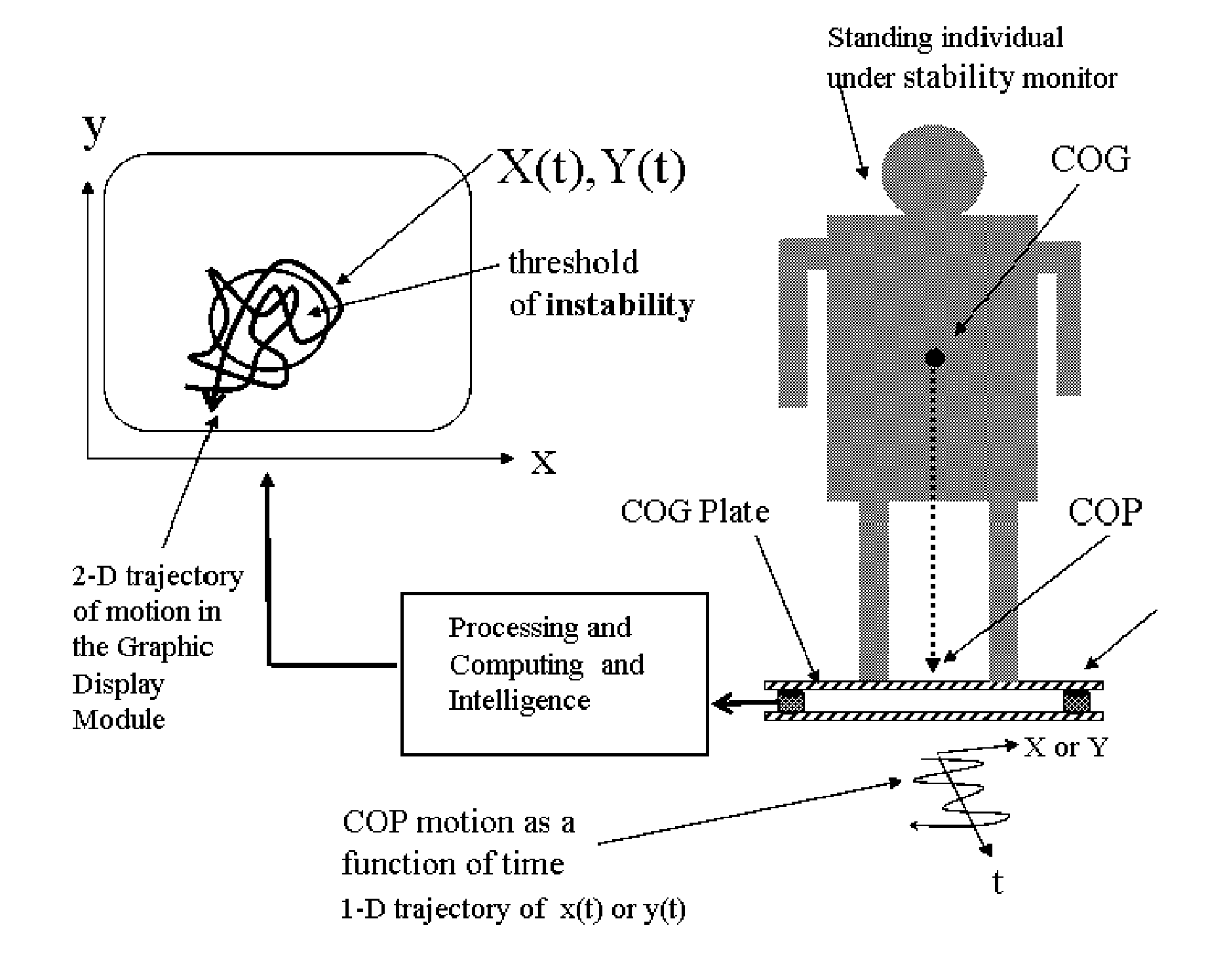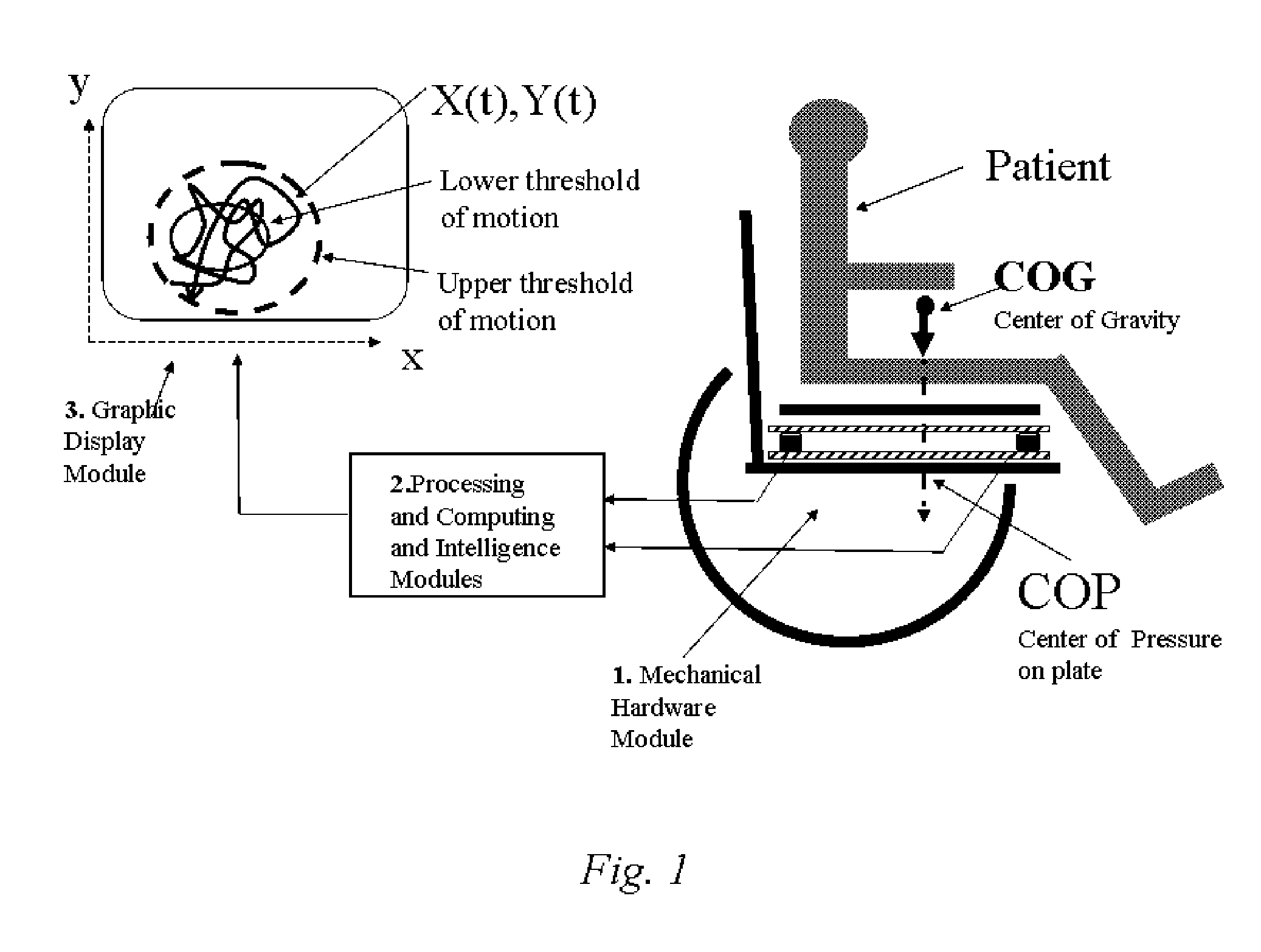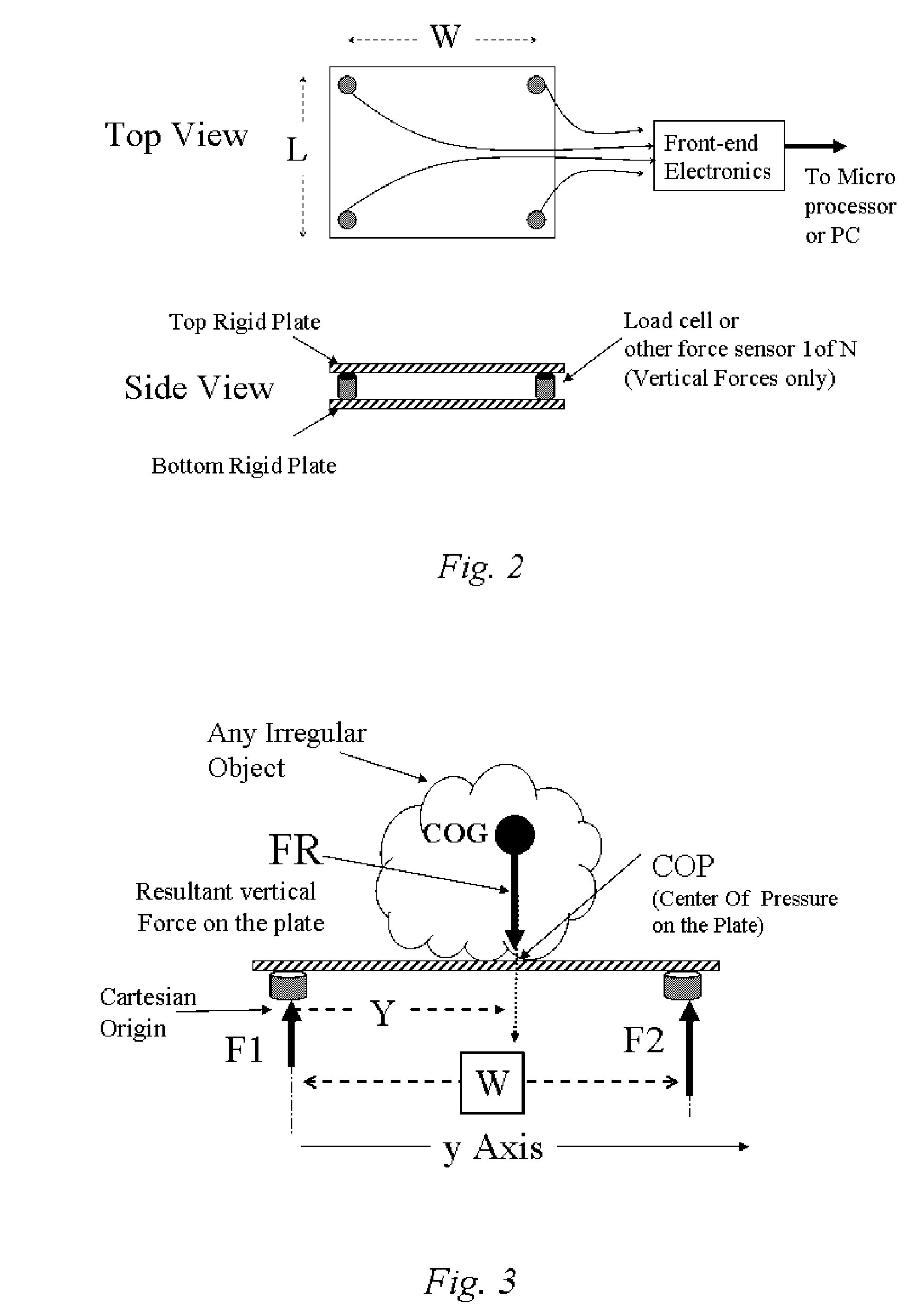Method and Apparatus for Automated Monitoring and Tracking of the Trajectory of Patients' Center of Gravity Movements
- Summary
- Abstract
- Description
- Claims
- Application Information
AI Technical Summary
Benefits of technology
Problems solved by technology
Method used
Image
Examples
Embodiment Construction
[0034] A more complete understanding of the present invention can be obtained in view detailed description of the illustrative figures.
System Overview
[0035] Accordingly, FIG. 1 represents an embodiment of the system adapted for monitoring a wheelchair bound patient for prevention of pressure ulcers, consisting of: a mechanical hardware module capable of producing electrical response on detection of movement of a subject (in this case a patient in a wheelchair); an electronic processing module capable of interpreting the electrical response of the hardware module into meaningful parameterization of the motion; and an output module that provides graphical (and optionally, audible) indication of the motion, and other inferential output.
Basic Principle
[0036] The basic principle of the system is to rely on the motion of the center of gravity (COG) of a patient as an indicator of body movement. This principle has been exploited in earlier work by one of the inventors in the study of...
PUM
 Login to View More
Login to View More Abstract
Description
Claims
Application Information
 Login to View More
Login to View More - R&D
- Intellectual Property
- Life Sciences
- Materials
- Tech Scout
- Unparalleled Data Quality
- Higher Quality Content
- 60% Fewer Hallucinations
Browse by: Latest US Patents, China's latest patents, Technical Efficacy Thesaurus, Application Domain, Technology Topic, Popular Technical Reports.
© 2025 PatSnap. All rights reserved.Legal|Privacy policy|Modern Slavery Act Transparency Statement|Sitemap|About US| Contact US: help@patsnap.com



